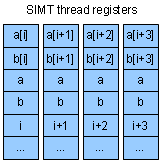Originally posted by AndyChow
View Post
Second, there is (or used to be) a distinction between how a small company designs an ASIC and how the big boys do it. Little guys would design in HDL (Hardware Design Language) and run some synthesis tool to generate a lower-level representation that references a library of the actual gate structures, provided by the fab. The Big Boys would do a so-called "full custom" chip, where they would design much more by hand. The difference is a significant multiple in power/performance. That's a big reason for the differential in engineering hours required by leading edge chip vendors vs. some small shop cranking out special-purpose ASICs. Now, I could certainly believe the synthesis and layout tools have progressed, since then.
BTW, speaking of tools and ASIC libraries, are those going to be open source? If so, how good are the open source synthesis tools?
If not, doesn't it make the effort that much less useful? I mean, open source software is something I can compile for myself. Whereas, with open source hardware, I just have to take someone's word that a chip was synthesized from some particular revision of the source - I have no way of being absolutely sure, and no practical way of modifying it even if I wanted. And from a security perspective, even the hardware designers can't be sure that someone at the fab didn't monkey with their RTL.


 it'll be a couple of years yet
it'll be a couple of years yet 



Comment